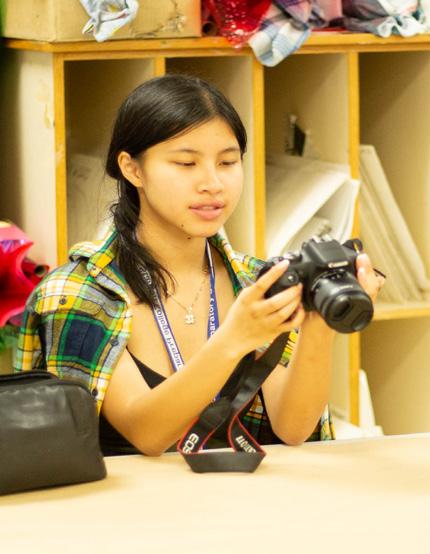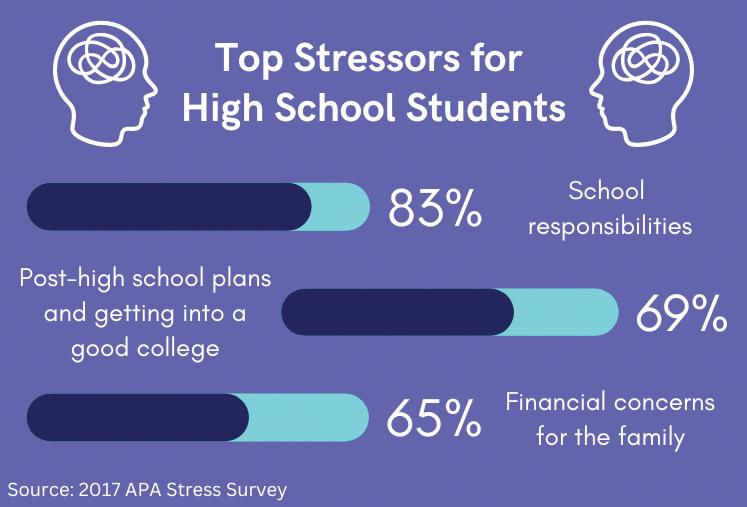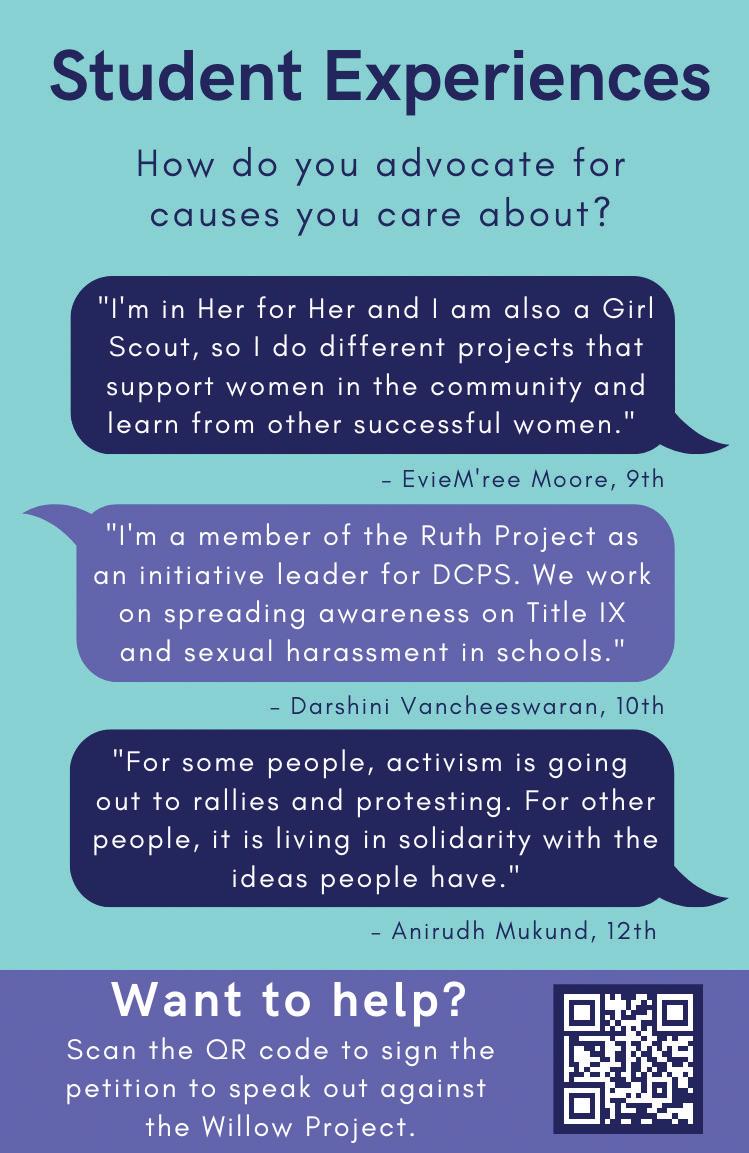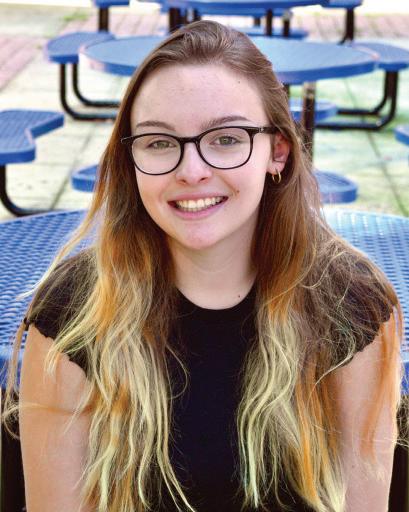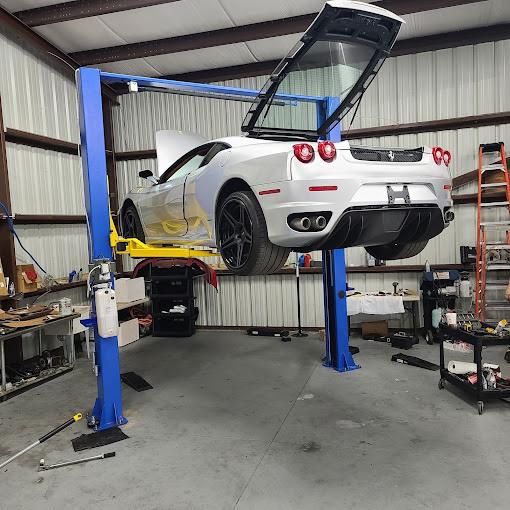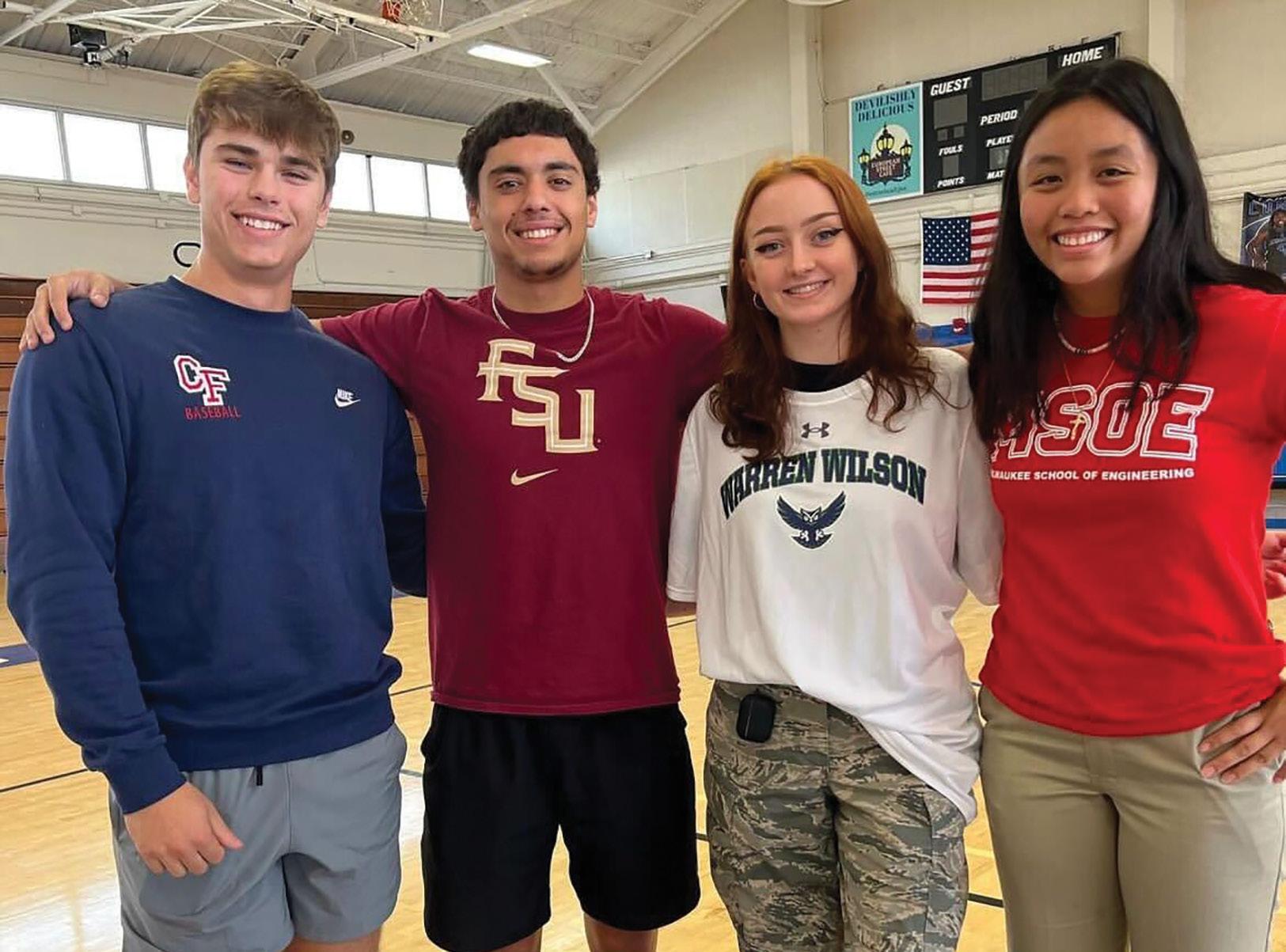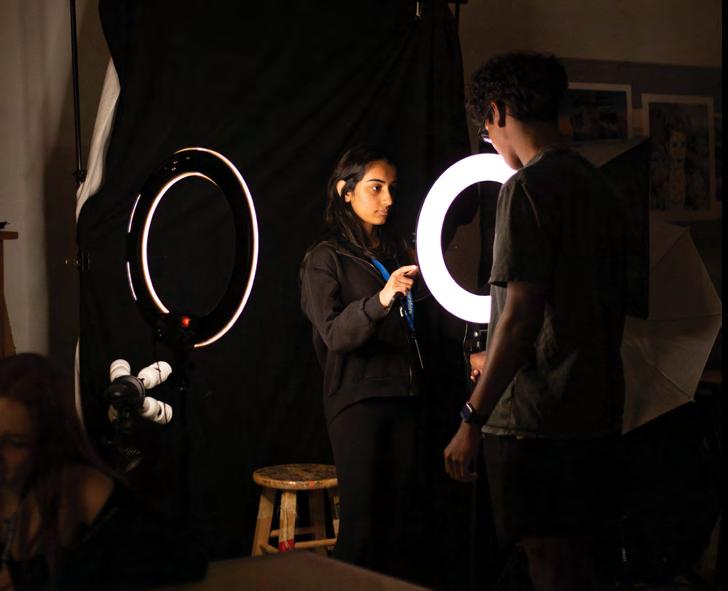
7 minute read
DIGITAL ART VISUAL ART Chorus
Preparing a winter-themed photography project, students in Mr. Wood’s Digital Art class use contrasting light for their shoot.
Stanton’s award-winning Chorus class performs a song at the latest Spring Concert.
Advertisement
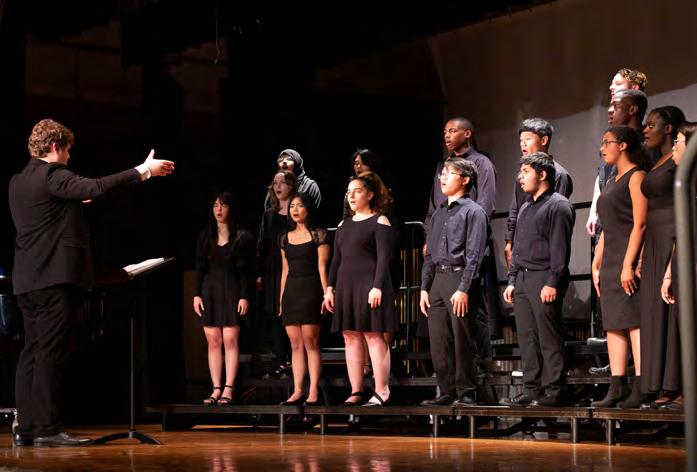
Students in Ms. Santa Lucia’s Visual Art class work on their latest pieces.
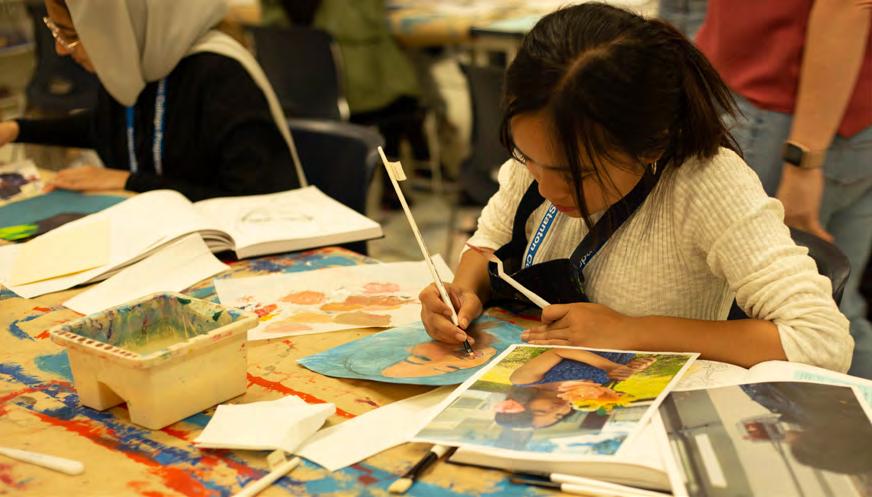
Interview with Juliana Thint, Stanton’’s Drum major
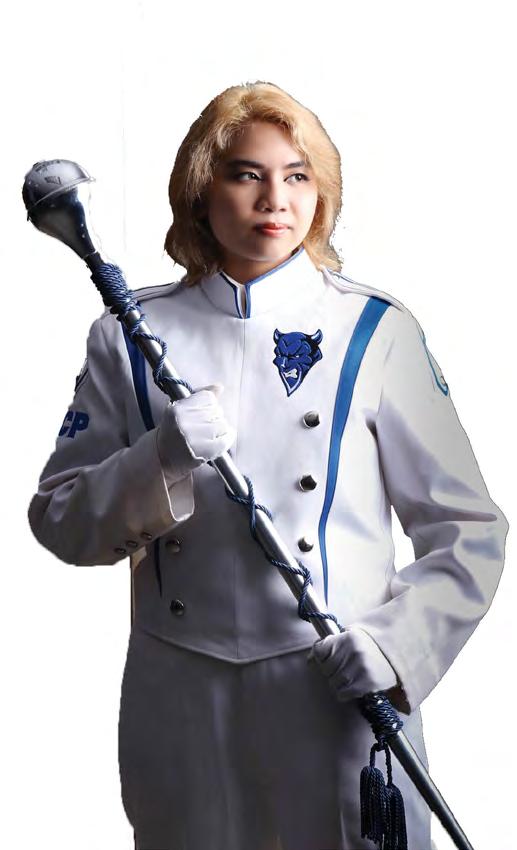
By KENDALL FORD, Staf Writer
How were you first introduced to music?
I told my parents when I was four years old that I wanted to become a rock star. I have absolutely no idea where that dream came from, but one month later, they signed me up for piano lessons and ever since, I have been given music opportunities through school.
What motivated you to join Stanton’s music program?
In eighth grade, Mr. Peters, the current Stanton band director, made rounds to all the feeder schools. And me being an alum of Julia Landon College Preparatory School, he came to Landon to talk about the Stanton music program and introduce the idea of marching band.
How would you say you have mentored other people?
I would like to say that I hopefully departed some of the knowledge that I’ve gained from the amazing directors that I have gotten to work with over my years of being a musician.
As a senior, how do you envision your future in the music world?
I am planning to major in music, specifically I’m looking to get a Bachelor’s in music education first, which is a four-year degree like most others. My main goal is to become a music instructor of some sort. I would love to do high school band directing.
LISTEN TO the full INTERVIEW HERE!




By GRACE LARSON, Staff Writer
“Over the past few years, technology has progressed to a point where it has become more sophisticated and has taken on characteristics that resemble those of humans. Some people have taken advantage of this capability by using it for their own beneft.” At frst glance, this quote may appear to be authored by a human; however, it was generated by a popular online chatbot known as ChatGPT. The software is wellknown for its ability to produce text that features a human-like tone. The website, considered a breakthrough in modern technology, has attracted a large crowd of users, including students at Stanton College Preparatory School. It is frequently used to produce classwork, replacing individual thought with automated responses. Students expect the bot’s work to appear similar to their own, though the diference has been noticed by educators worldwide. As more students begin to use this technology, individuals worry about its implications on education. When talking to the bot, students can enter various prompts, requesting a response written in diferent tones. Its use of varying styles makes it more advanced and human-like than its predecessors. High school and college students alike can manipulate ChatGPT, using specifc commands to get the chatbot to complete assignments on their behalf. This work is completed in minimal time, making it more convenient for students who are looking to cheat. Educators fear this will have negative implications on students’ learning by hindering their creativity and promoting laziness.
“When we begin to search for information from other sources, we can start to lose our own voice,” said Mrs. Holly Lanham, Director of Technology Innovation for Duval County Public Schools. “If we begin to rely on tools such as ChatGPT to produce our work [and] give us guidance, we begin to lose ourselves.”

DCPS personnel are wary of the progression of AI, fearing new advancements like ChatGPT will lessen the quality of students’ work. By using AI to respond to their classwork, students begin to lose their individual style and tone. Wishing to see the progression of their students’ skill, instructors, like those at Stanton, are frustrated by their use of the chatbot. They feel steps must be taken to resolve students’ misuse of modern technology in classrooms.
“Teachers, schools, and districts need to develop techniques and policies for dealing with ChatGPT and AI because the future will hold even greater reliance on such sources,” said Stanton English teacher Mrs. Maura Donoher.
In addition to frustration felt by teachers, similar emotions have been experienced by those working in the tech feld. Chris Caren, CEO of Turnitin, a website that checks students’ work for plagiarism, is developing software that can detect the use of ChatGPT in assignments.While the company acknowledges the benefts of using such technological advancements in a school setting, it also mentions its eforts to combat inappropriate use of the website.
According to a statement on Turnitin’s website, the company believes “AI can be a positive force that, when used responsibly, has the potential to support and enhance the learning process.”
Not only is ChatGPT frequently used in a school setting, it is also apparent in the creation of modern art, damaging the authenticity of art itself. Whether it be a piece of writing or a drawing, art is based on the individuality and creativity showcased by its creator. When technology is implemented in the artistic process, it uses pre-existing works of art as reference. Developments like OpenArt have sparked controversy among users, who feel the program violates the ethics of art and technology. Opponents fear the program will have grave implications on creativity, as it threatens the originality of modern art. The division on such topics has caused a struggle between those looking to defne the limitations of AI.
“[Art] should be unique to [each] person,” said sophomore Ria Adake. “I do not think it is ethical to use artifcial intelligence for things that are supposed to represent your creativity.”
In this new technological era, people have struggled to reach a conclusion on the ethics of using ChatGPT. Users and teachers fnd it challenging to defne how the chatbot should be used. The International Baccalaureate Program is among the frst to draw conclusions on its proper use.
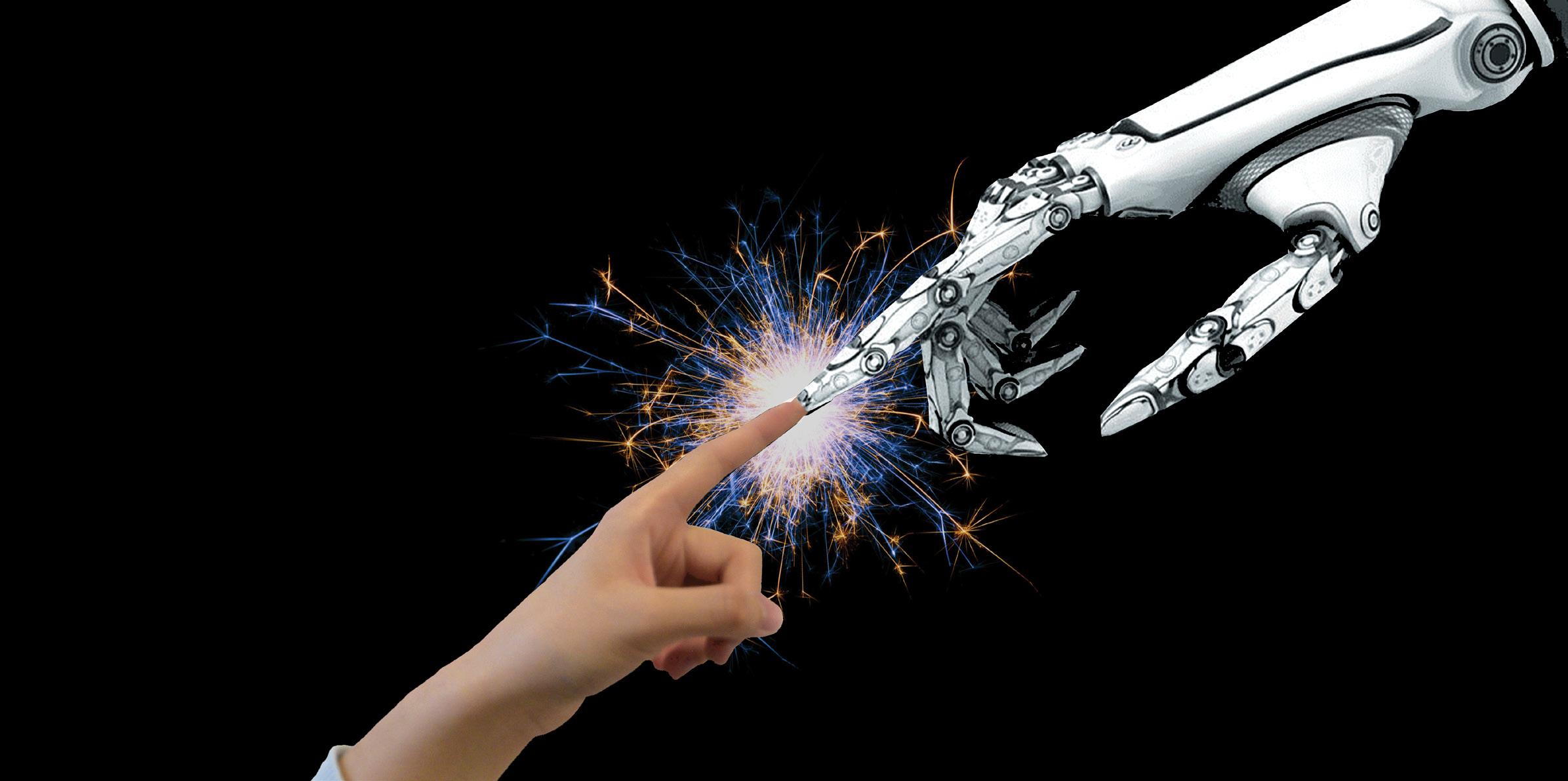
“The International Baccalaureate has decided it is not ‘banning’ the use of ChatGPT or any similar AI software as has been seen elsewhere; this is the wrong way to deal with innovation,” said Dr. Matthew Glanville, Head of Assessment Principles and Practice, in a statement on their website.
The IB program allows students to use the bot as a research tool they can cite in their essays. Some are shocked by this decisions, while others believe it is an ethical way of dealing with newer developments in technology.
IB students like senior Jennifer Chen, President of Stanton’s Robotics Club, often share this same sentiment.
“As long as students do not use it to do all of their work, but rather use ChatGPT as a way of helping their writing, it would be helpful for education,” said Chen. Certain users feel ChatGPT can be used ethically in a school setting, arguing it has great benefts as a research tool. Its impact on students depends on how they choose to use the software, meaning it can have both positive and negative efects on their work. Sophomore Jaan Thacker feels one beneft of ChatGPT is its ability to gather information on a subject, helping students draw a conclusive outline on a topic before beginning a paper.
“[ChatGPT] is useful for giving you a general outline of what you have to do,” said Thacker. “It does not always give you the most correct answer, but it is a starting point for research and fguring out what you have to do.”
Not only do supporters consider it a useful research tool, they also feel it can be used to review papers before they are submitted. Proponents of the chatbot claim it promotes a deeper level of intelligence by allowing them to focus on enhancing the quality of their work, rather than detecting small errors. Users may rely on ChatGPT to catch minor mistakes in their writing, allowing them to spend more time on the content of their work. Others argue against this claim, stating the option promotes laziness among its users.
“Some people [are] dependent on AI for a lot of things,” said sophomore Avishka Fulgavkar. “People [do not] want to do their own work, [and are] less efcient and creative. They will [turn] to AI for anything.”
People like Fulgavkar feel it makes users more reliant on the software, creating a false sense of dependency on the bot. Though users regard this as more efcient, it can also hinder their revision skills by allowing them to use the chatbot to further the accuracy of their work. Not only do people feel the website has grave implications on the educational department, they also worry about its efect on society as a whole. Beginning less than a century ago, AI was a minimal force that barely impacted the lives of individuals. Now, modern devices and systems pose a greater threat to society.
According to an article published by Harvard University in 2018 titled, “The History of Artifcial Intelligence,” scientists and programmers in the early 20th century hoped to create a robot that used human-like critical thinking skills to solve problems. This task was frst achieved by Allen Newell, Clif Shaw, and Herbert Simon in 1956 with the invention of the Logic Theorist. Regarded as the frst artifcial intelligence program, the Logic Theorist was the frst computer program designed to perform automated reasoning. Its release strengthened the public’s faith in technology’s ability to mimic human nature. For decades, scientists made advancements that foreshadowed the emergence of emotionally -intelligent robots. The most recent success in nearly a century of developments comes from OpenAI’s release of Sam Altman’s ChatGPT in November 2022. Since then, individuals have questioned the chatbot’s efects on society, including
For years, there has been speculation that robots may take over the workforce, but with the emergence of more human-like devices the idea has grown more feasible. As technology begins to mimic human intelligence, individuals have grown wary of robots inheriting pivotal roles in society.
“[Technology] could bypass our understanding of it if we do not deal with it in the correct way,” said junior Luke Tattersall. “If we are smart enough, we will [never] replace software engineers with AI. But the fact that [ChatGPT] is easily accessible to everyone means we are very close to having robots replace jobs.”
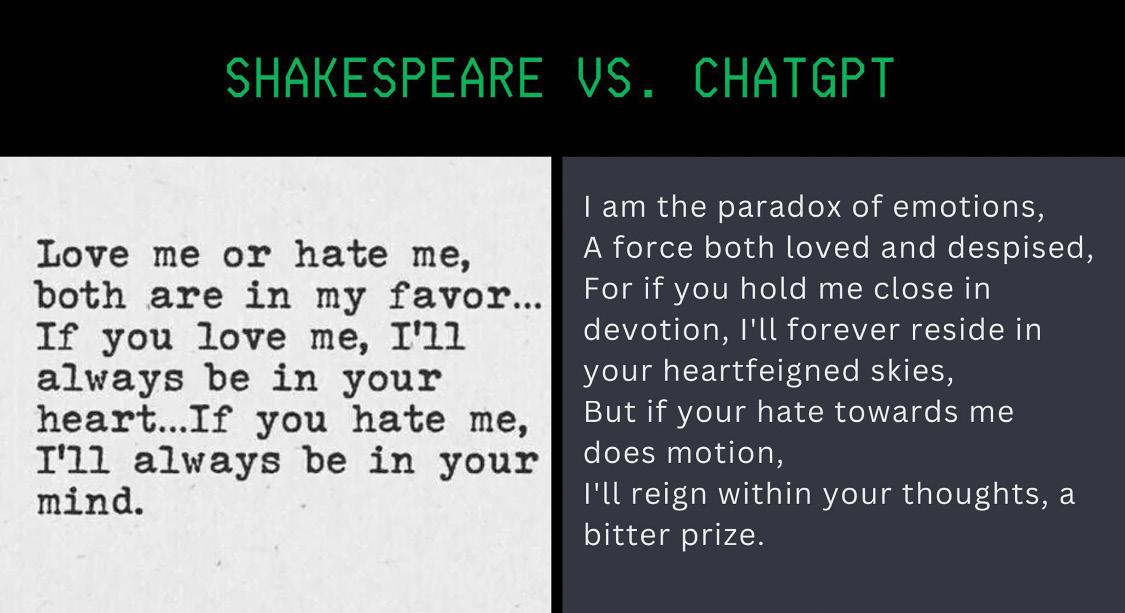
Business owners can employ the use of the chatbot to debug coding and create websites. Entrepreneurs regard this as a cheaper, more efcient alternative to hiring formal programmers. Some consider this to be positive, as it would make the workplace more proactive and accomplished. However, it also threatens the position various individuals, promoting the rise of unemployment. People fear as the device adopts more human-like processes, jobs will be taken over and robots will be responsible for the declining state of society.These speculations have made users wary of the rapid development of technology.
Modern advancements allow AI to assist the general population with simple, everyday tasks. Advancements like ChatGPT have alarmed individuals, who feel this will have negative implications on society’s creativity. Others fear it may lead to a future controlled by technology, where computers have outsmarted humans. Supporters of more developed technology praise its human-like qualities. Though ChatGPT garners mixed reviews, it depicts a growth in the quality of artifcial intelligence. Growing sentiment indicates that technology can be used for both good and bad, depending on how society chooses to use it.




